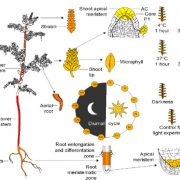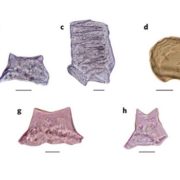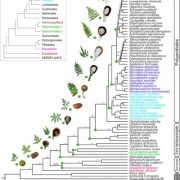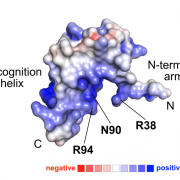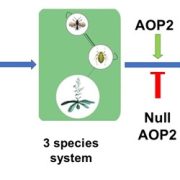Aquatic fern genomes provide insight into land plant evolution and symbiosis (Nature Plants)
 Land plants evolved from freshwater charophytic algae over ~450 million years ago and have since diverged into the plethora of embryophyte genera that we see today. Genomics efforts have classically focused on key angiosperm species representing experimental model systems and/or agriculturally important crops, yet an increasing amount of attention is now being given to earlier diverging plant lineages. In a keystone study published in Nature Plants, Li et al. describe the successful assembly and analysis of two aquatic fern genomes (Salvina cucullata and Azolla filiculoides). The authors discuss recent whole genome duplication events in ferns and the likely acquisition of insecticide-related genes by horizontal gene transfer from bacteria. In addition, in-depth phylogenetic analyses demonstrated that Azolla maintains a unique symbiotic relationship with cyanobacteria despite lacking gene families essential for root-nodule (bacteria) and arbuscular mycorrhizal (fungal) symbiosis. Collectively, this work sets the stage for future comparative genomics analyses that will address questions pertaining to the evolution of plant-cyanobacteria symbiosis and other key plant traits. (Summary by Phil Carella) Nature Plant 10.1038/s41477-018-0188-8
Land plants evolved from freshwater charophytic algae over ~450 million years ago and have since diverged into the plethora of embryophyte genera that we see today. Genomics efforts have classically focused on key angiosperm species representing experimental model systems and/or agriculturally important crops, yet an increasing amount of attention is now being given to earlier diverging plant lineages. In a keystone study published in Nature Plants, Li et al. describe the successful assembly and analysis of two aquatic fern genomes (Salvina cucullata and Azolla filiculoides). The authors discuss recent whole genome duplication events in ferns and the likely acquisition of insecticide-related genes by horizontal gene transfer from bacteria. In addition, in-depth phylogenetic analyses demonstrated that Azolla maintains a unique symbiotic relationship with cyanobacteria despite lacking gene families essential for root-nodule (bacteria) and arbuscular mycorrhizal (fungal) symbiosis. Collectively, this work sets the stage for future comparative genomics analyses that will address questions pertaining to the evolution of plant-cyanobacteria symbiosis and other key plant traits. (Summary by Phil Carella) Nature Plant 10.1038/s41477-018-0188-8


